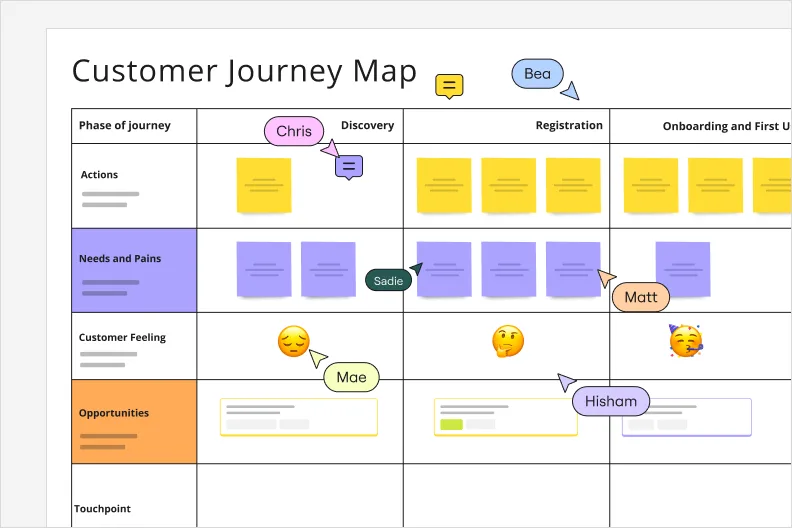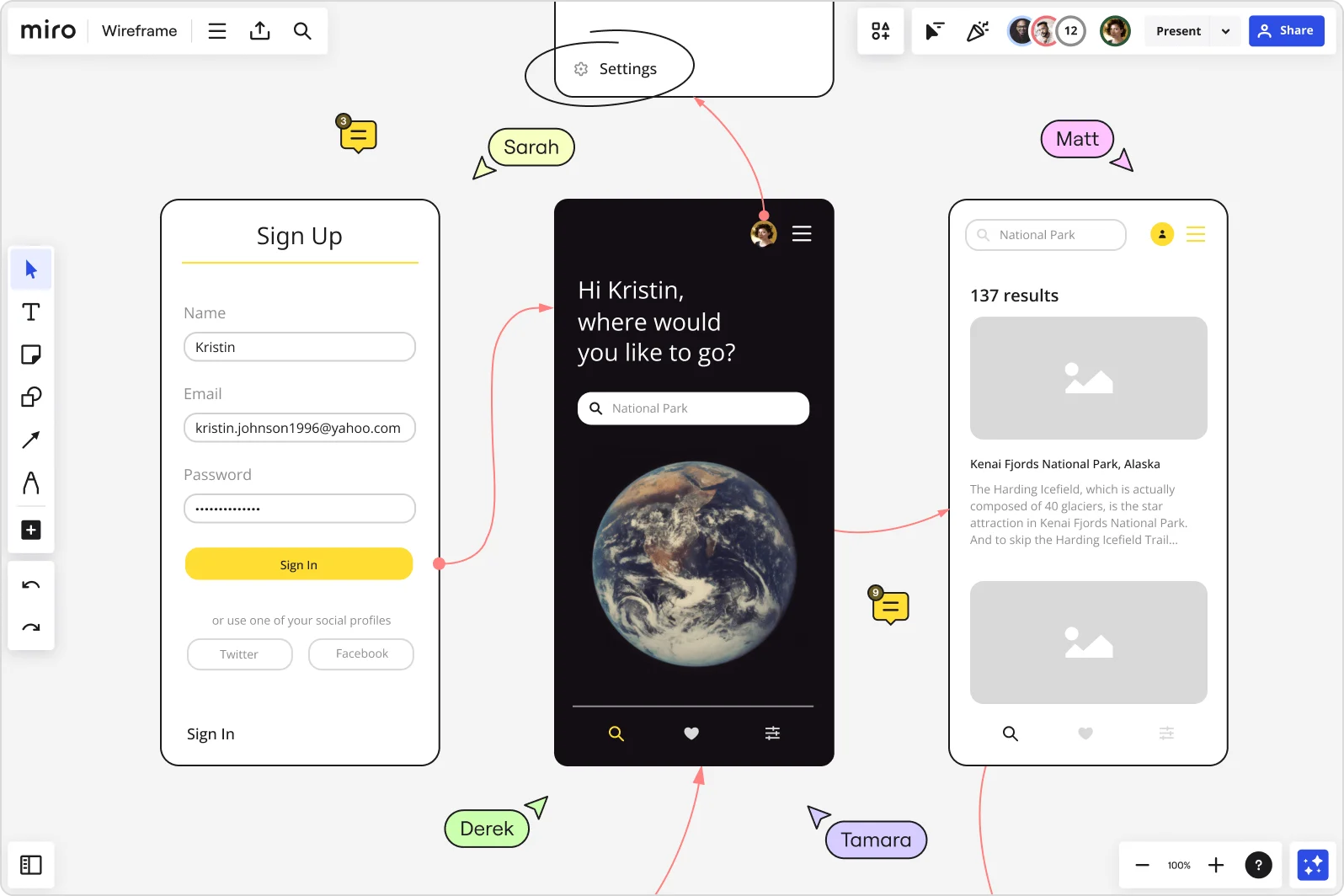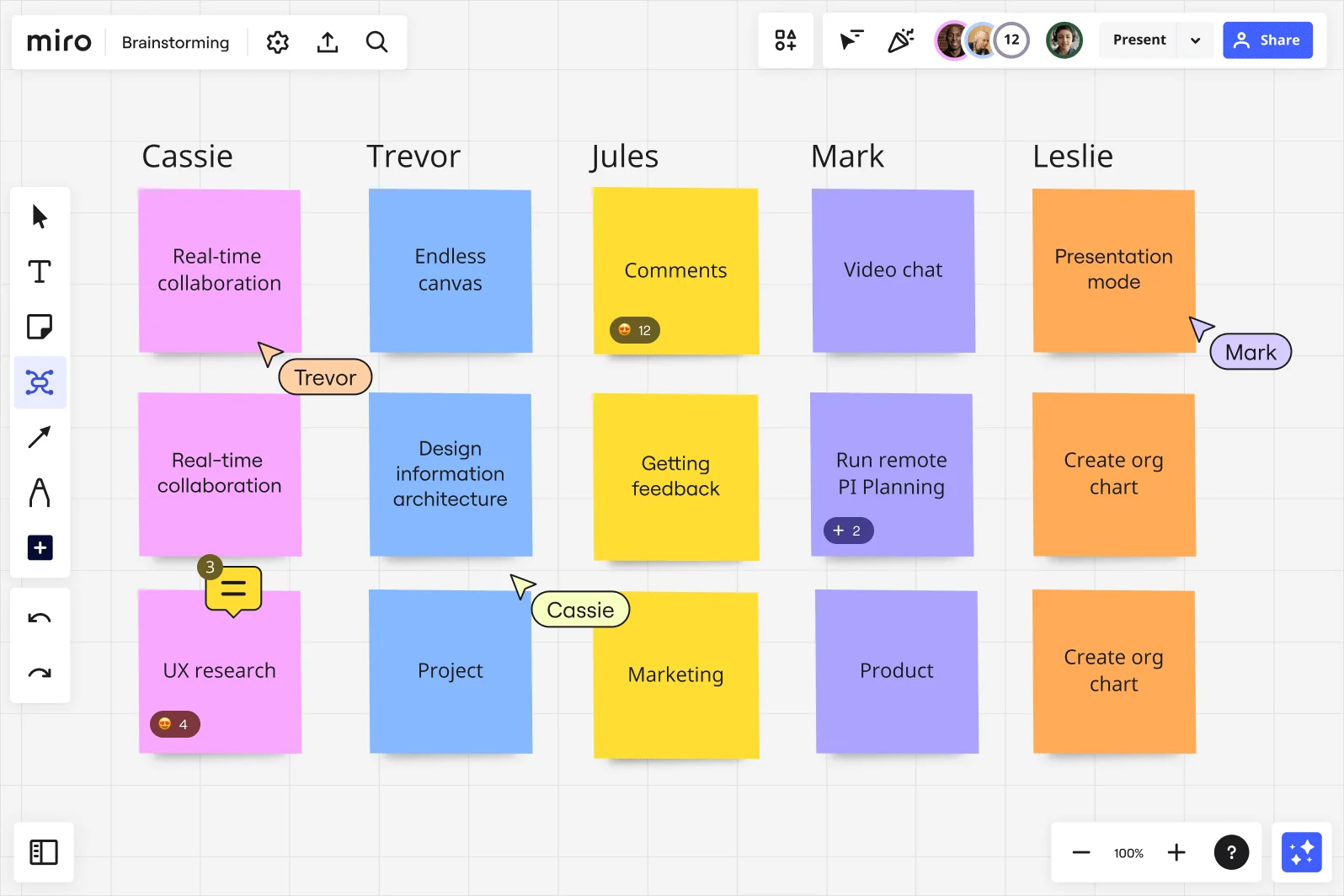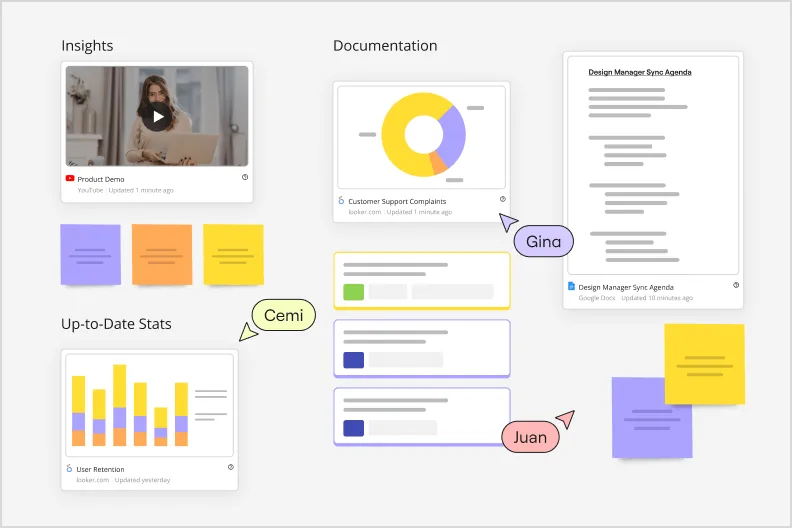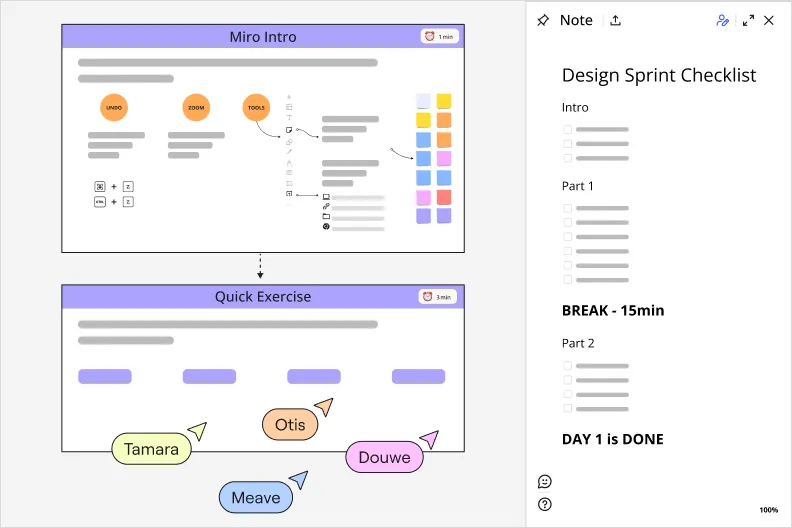統合分析のプロセスをスピードアップ

継続的なリサーチの努力がより良い製品を生み出す
顧客データを一元化
収集した情報を単一の Miro ボードにまとめ、印象に残るわかりやすいビジュアルデータを作成することができます。Usertesting、Typeform、Loom などの統合ツールを介して、ユーザーインタビュー、アンケートデータ、録画ファイルなどをひとつのワークスペースに集約し、共有できます。
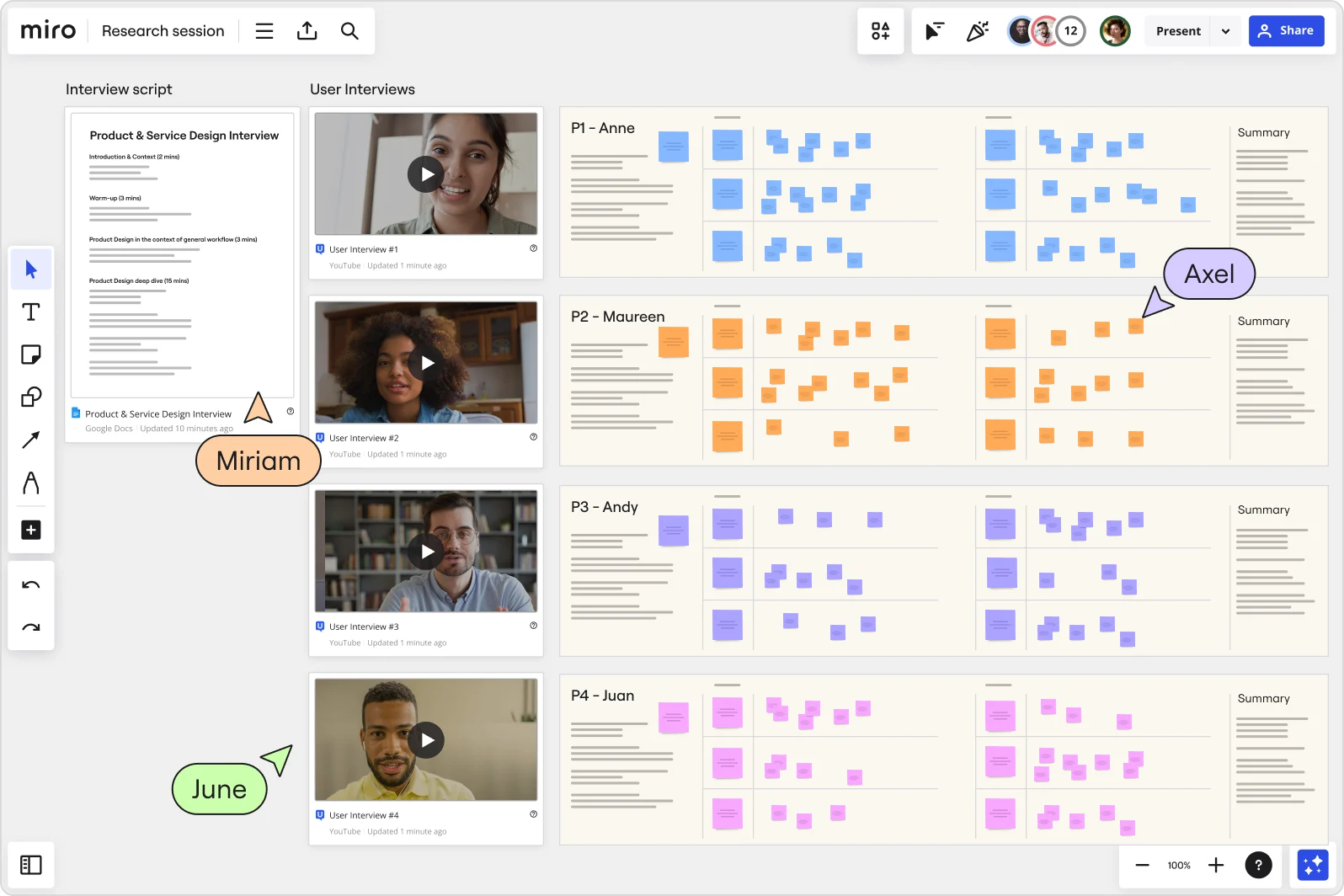
ステークホルダーの参加を促す
作業プロセスには終始一貫してステークホルダーの協力が必要となります。Miro のコラボレーション ツールを利用すれば、調査結果の検討、レコメンデーションの調整、データをもとにした意思決定といったプロセスにチームメンバーが共に取り組むことができます。Talktrack で作成したウォークスルー動画を使って、非同期メンバーも参加できます。
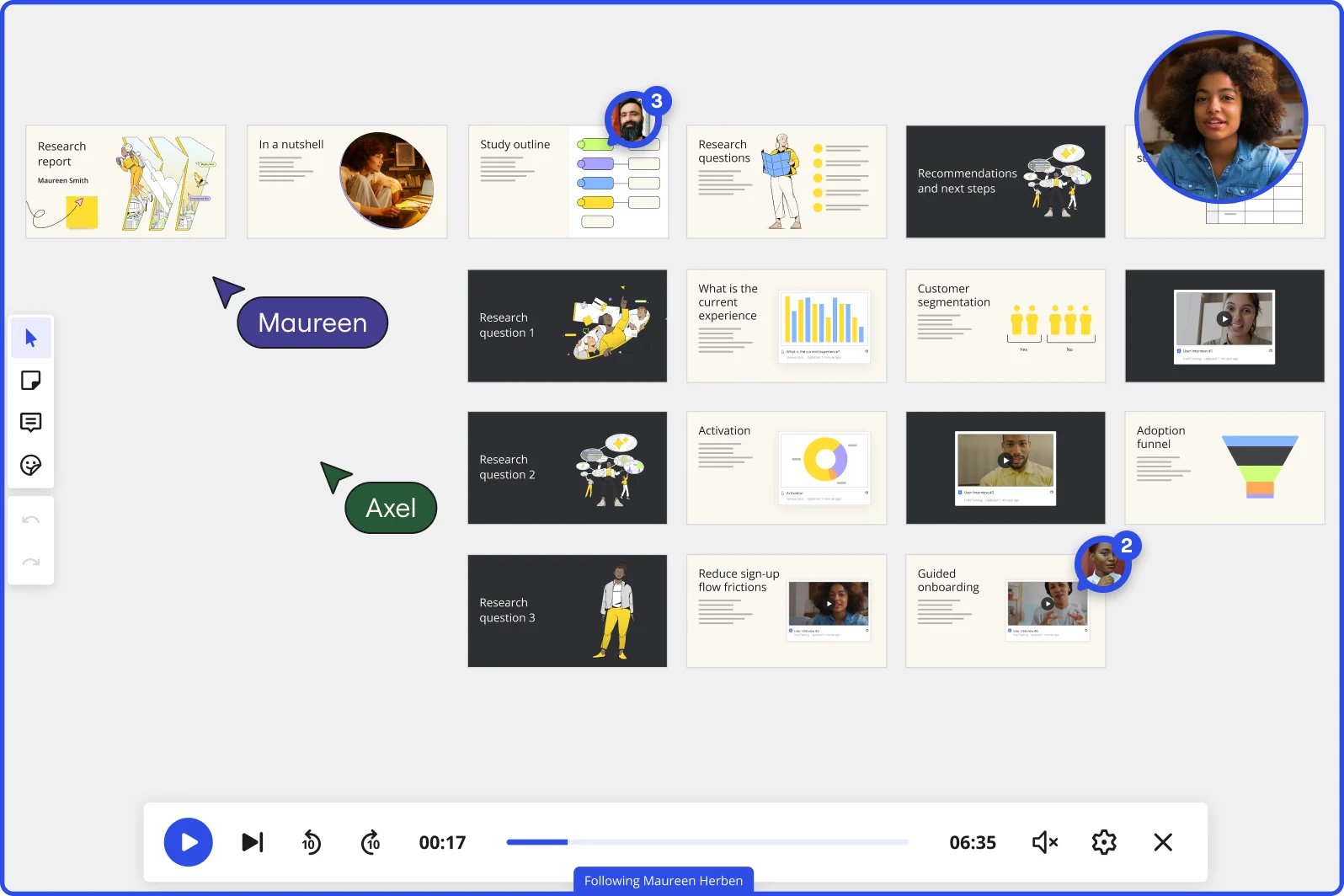
リサーチワークフローを合理化
大量の非構造化データセットの整理、分析、統合が可能です。Miro AIでテーマを効率的にクラスタリングし、知見を要約。高度なデータスキルがなくても、インパクトのあるインサイトを提供する時間を確保できます。
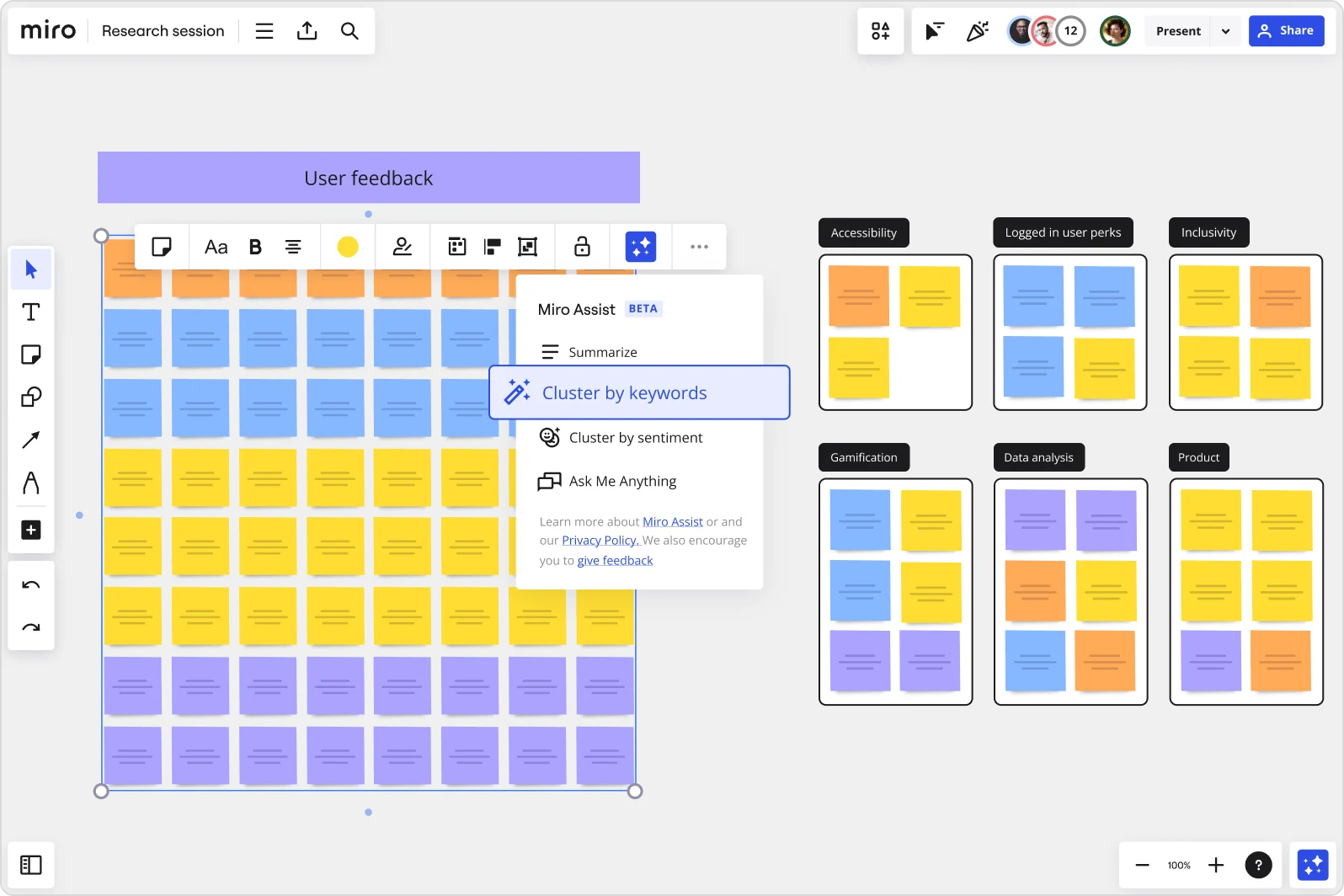
UX リサーチャーのデニスは E2E ユーザー調査で Miro を活用

統合分析分野で Miro が人気の理由

インサイトをひとつのワークスペースで管理
UserTesting や Typeform などの調査用プラットフォームや Amplitude のような BI システムと Miro を連携すれば、データや UX インサイトをひとつのボードで一元管理できます。それぞれのプラットフォームから抽出した調査データを統合し、ひとつのレポートにまとめましょう。

インサイトの紐づけを行う
データ間の関連性を可視化し、チーム内で分析データをもとに議論を深めましょう。無記名投票機能などを使い、どの要素を含むべきか意見をまとめましょう。複数のステークホルダーから得た調査結果についてクラスター化してまとめておけば、議論をする時に便利です。複数のソースからのインサイト収集機能を使えば、データをもとにした意思決定が可能になります。

シームレスな統合調査を実現
AI 技術で分析プロセスをさらに加速。複数のチーム、テーマ、ソースにわたる大量のデータを、付箋の要約と感情分析を備えたMiro AIで統合し、意思決定を迅速化します。

単一ユニットとして協働
複雑なリサーチプロジェクトでもチームが一丸となって共同作業を行えば、ステークホルダーと意思決定者はプロセスを通してインプットを提供できます。ウォークスルー動画を作成し、コメント、スタンプ、付箋を付けたり、文章でフィードバックを残すなどして、各チームメンバーの受信箱に直接リマインダーを送信しましょう。
Miro が提供するソリューション
便利なテンプレート





インサイト統合の方法
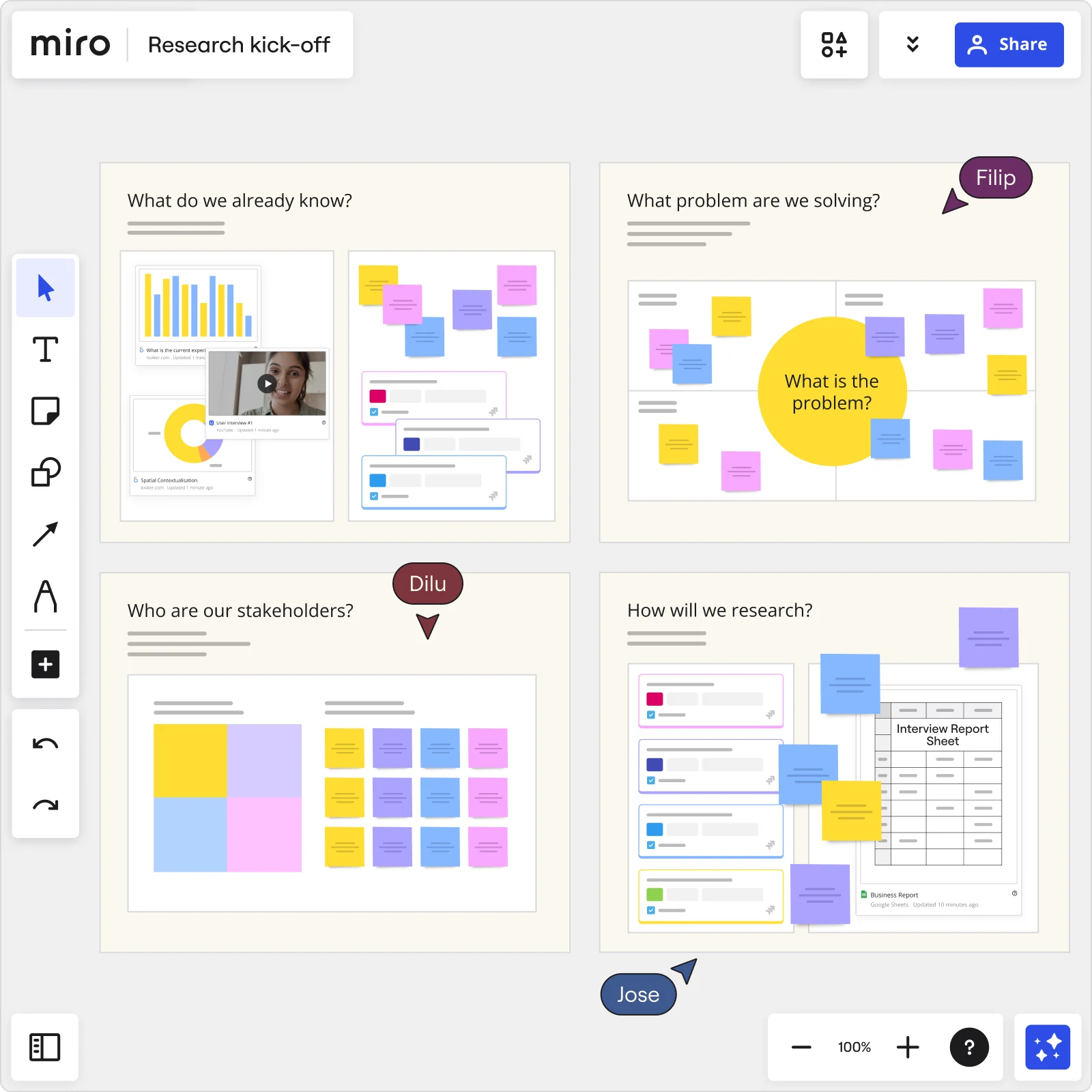
調査とインサイトの統合に関するよくある質問

統合分析はなぜ重要なのですか?
多様な研究資料やデータセットから得られた膨大な量の情報を整理し、理解に導く過程で必要となるためです。統合分析により、研究者や現場スタッフはトレンドや認識のギャップを把握でき、また、さらに調査が必要となる分野を明確にすることができます。
統合分析にはどのような方法を使うのですか?
一般的にプロダクトディスカバリーの調査においては、ユーザーへのインタビュー、アンケート、ユーザビリティー テスト、エスノグラフィー調査、競合分析、ジャーニーマッピング、プロトタイプテストといった手法が用いられます。これらの方法で、定性/定量データの収集、ユーザー行動分析、ペインポイントの特定、改善できる項目の割り出しが可能になります。
統合分析の手順について教えてください。
データの抽出:例えばデザイン研究、サンプルサイズ、方法論、研究結果ほか、選択した研究テーマから関連情報をそれぞれ抜粋します。さらに掘り下げて調査を行う時のために、抽出したデータを整理し目録化しておきます。
データ分析:研究と調査の対象に応じて、統計解析、内容分析、主題分析、メタ分析(該当する場合)など、さまざまなタイプの分析を行うことができます。パターン、トレンド、そして各研究に共通するテーマを特定しましょう。さらに個々の研究の調査結果を統合し、より広範な結論またはインサイトを導きます。
データの解釈と統合:統合した調査結果を分析して調査問題への回答を作成、または調査の目的を今一度確認します。そして調査結果から、意見が分かれる領域、一般的に合意が得られている領域、欠落している部分を特定します。結論を出し、まとめたエビデンスに基づいた推奨案を提供します。
レポートの作成と伝達:包括的な統合調査レポートを作成します。レポートには調査のテーマ、方法論、調査結果、結論、レコメンデーションを含みます。統合プロセスと調査結果について、対象オーディエンスにわかりやすく伝えましょう。オーディエンスは調査コミュニティー、政策立案者、開業者、一般人のいずれかであると考えられます。
レビューと検証:同僚や専門家に統合調査内容のチェックを依頼しましょう。調査結果にもとづくアプローチが的確であるか、有効性と信頼性を確認するためです。
Miroは、研究統合におけるチームの共同作業をどのように支援しますか?
Miroは、研究チームと関係者を1つの安全なビジュアルワークスペースに集結させます。チームは、無限キャンバス上で直接共同作成する前に、ノート、ユーザーフィードバック、データソースを一元管理できます。
リアルタイムおよび非同期のコラボレーション機能により、洞察も会話と常に連携した状態が保たれ、追加の会議の必要性が軽減されます。
Miroには研究統合の例やテンプレートはありますか?
はい。ミロバース Miroverse は、コミュニティ主導のライブラリであり、他のMiroユーザーによって作成・使用されている数千ものテンプレートを収蔵しています。これは、一から始める必要がなく、すぐにインスピレーションを見つけられることを意味します。
ミロは、大規模または複雑な研究統合プロジェクトを処理できますか?
もちろんです。Miroは、数件のインタビューメモから複数チームにまたがる数千のデータポイントまで、あらゆる規模の研究を管理するために設計されています。大規模なデータセットはAIクラスタリングを用いて整理・タグ付け・統合が可能であり、160以上の連携機能により全てのデータを同期状態に保ちます。
Miroを研究統合プロジェクトのワークフローに合わせてカスタマイズすることは可能ですか?
Miroは柔軟でカスタマイズ可能なワークスペースであり、お好みの方法で自由にカスタマイズできます。繰り返し使用する調査手法のテンプレートを作成し、チーム間で再利用するか、特定のプロセス向けにボード、ツール、フォーマットが事前設定されたスペースとしてMiro Blueprintsを活用してください。

